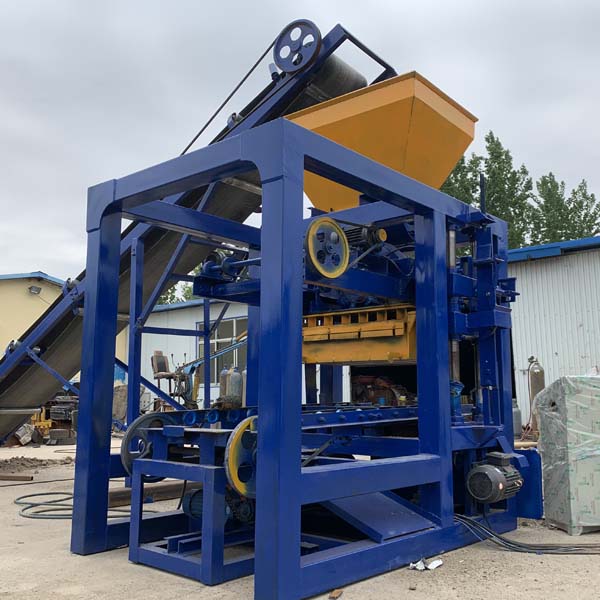
The construction industry stands at the crossroads of technological advancement and traditional craftsmanship.
In recent years, automation has emerged as a driving force behind increased efficiency and productivity in various sectors.
In the construction realm, the latest innovation in this direction is the automated block machine, a technology that redefines efficiency in production processes.
This essay delves into the transformative impact of the latest automated block machine, exploring its mechanisms, benefits, challenges, and its potential to revolutionize the construction landscape.
Mechanisms of the Latest Automated Block Machine
The latest automated block machine represents a culmination of engineering excellence and technological integration.
This machine is designed to streamline the production of building blocks, such as concrete blocks, bricks, and pavers, through a meticulously choreographed sequence of automated processes.
Its core components include a batching system that precisely measures raw materials, a mixing mechanism that blends ingredients to the desired consistency, a compression chamber where the mixture is formed into blocks, and a curing system that facilitates proper strength development.
The automation in this machine is driven by computerized control systems, sensors, and robotic arms.
These components work in tandem to eliminate the need for extensive human intervention during the manufacturing process.
By minimizing manual labor, the machine not only enhances efficiency but also ensures consistent product quality and reduced waste.
Moreover, the integration of remote monitoring and data analysis capabilities allows operators to oversee production remotely, fine-tuning processes for optimal results.
Benefits of Automated Block Machine Technology
The introduction of the latest automated block machine technology heralds a multitude of benefits that resonate across the construction industry.
One of the most notable advantages is the substantial reduction in production time.
Automated machines work tirelessly around the clock, drastically reducing the time required to manufacture building blocks compared to traditional manual methods.
This accelerated production timeline translates into faster project completion, enabling developers to meet tight schedules and deliver projects on time.
Furthermore, automated block machines enhance precision and consistency.
The intricate interplay of automated mechanisms ensures that each block produced adheres to precise dimensions and specifications, minimizing variations that can lead to construction delays or compromised structural integrity.
This consistency not only improves the aesthetic quality of finished structures but also enhances their durability and overall performance.
Challenges and Implementation Hurdles
While the latest automated block machine technology holds immense promise, its implementation is not without challenges.
One of the primary hurdles lies in the initial investment required to acquire and set up these machines.
The cost of purchasing, installing, and integrating the necessary infrastructure and technology can be a deterrent for smaller construction companies or those operating in regions with limited resources.
However, proponents argue that the long-term benefits, such as reduced labor costs and increased productivity, can justify the upfront investment over time.
Moreover, the transition to automated production may require workforce reskilling.
As machines take over repetitive tasks, skilled laborers may need to acquire new competencies related to machine operation, maintenance, and troubleshooting.
This shift necessitates a strategic approach to training and upskilling to ensure a smooth transition and to maximize the potential benefits of automation.
Revolutionizing Construction Practices
The advent of the latest automated block machine technology has the potential to revolutionize construction practices in profound ways.
By optimizing production processes and minimizing human intervention, these machines alleviate labor shortages, a common challenge in the construction industry.
This shift could attract a more diverse workforce, as the demand for traditional manual labor decreases, opening doors for individuals with expertise in robotics, programming, and maintenance.
Furthermore, the enhanced efficiency afforded by automated block machines contributes to sustainable construction practices.
Reduced production time, precise resource utilization, and minimized waste all contribute to a smaller ecological footprint.
As the construction industry faces increasing pressure to adopt environmentally conscious methods, automated technology aligns well with these goals.
The latest automated block machine technology represents a watershed moment in the construction industry, redefining efficiency in production processes.
Through intricate mechanisms driven by automation, these machines accelerate production timelines, ensure consistent quality, and revolutionize construction practices.
While challenges such as initial investment and workforce adaptation exist, the benefits in terms of reduced labor costs, faster project completion, and improved sustainability are compelling.
As the construction landscape continues to evolve, embracing automated block machine technology stands as a pivotal step towards a more efficient, advanced, and sustainable future.
